5A Unit 9 说课稿(精选3篇)
5A Unit 9 说课稿 篇1
good morning, everyone!
today, i’ll say something about unit 9 part a in book 4 of oxford english.
background on the reformation of curriculum, this book can connect the life and act, emphasize the interest and experience of the ss, the pictures are active and vivid. grade four is the initial stage of english learning, so it stresses on the emotion of the ss, creates a well beginning for the ss. this unit has 7 parts, we’ll learn part a mainly, it embodies the repeating characterize. review the learned language points “where’s…”and the new language points will be represented in the following units. so this unit forms connecting links with a special meaning in this book.
the content of this period is to use “where’s\are…” to determine the place. and according to the contents and the fact of the ss, i establish the following three teaching aims of this period:
the first one: students can listen, read, say and spell the following words: a glass, a fridge, an egg, bread and a table.
the second one: students can listen, read, say and write the following daily expressions: what’s for breakfast?
have some juice then.
the third one: students can listen, read, say and write the following sentence patterns: where’s\where are the\my…
it’s \they’re…
there’s no …in \on \near…
i think the most difficult point of this period is to make sure the students can use the patterns “where’s\where are…and there is no …in\on\near…” in their daily life correctly.
and i will use some pictures, words and sentence cards, a tape recorder and the multi-media computer to help me achieve the aims.
the task-based method, communicated method, group cooperate method will be used in this period.
to accomplish the aims, i design the following steps:
step 1 songs and the game arousers the emotion.
in order to attract the ss’ attention and construct an atmosphere of learning english, i let the students sing some english songs and play the game “simon says”. at the same time the game can review the prep, serve the knowledge as foil and consist the appearance of the knowledge.
step 2 change class to life, happy to say.
the substance of language is communication and the environment of communication is life. so when i present the sentence pattern “what’s for breakfast?” i first show a clock to elicit the time for breakfast, teach the sentence. then show my own photo of having breakfast, ss ask and guess. in this way i can attract ss’ attention, encourage ss to ask qs with the new knowledge.
most of the ss have learnt the sentence pattern: where’s…? so i design a task for ss to help helen find the food and drinks for breakfast, and teach the new language points: where are…? they’re … meanwhile stick the sentences on the bb.
after some practice by asking and answering, i present the next language points:
there’s no …in\on\near…
have …then.
and i will stick these sentence patterns on the bb. finally i’ll let the ss do pair works to consolidate them.
step 3 listen to the tape and ss imitate to read and say.
as the new reformation of curriculum, emphasized the traditional class attach importance to the mechanical teaching, neglect the experience and participation, for example, the five-step method. so in this lesson, after presentation, i ask ss to listen to the tape with three qs, read in different roles and in pairs, then try to recite the text.
step 4 ss be the main body, t makes a guider.
in class, ss play as a host, and the t makes an influence on guiding, help ss to act the learnt dialogue, it can stress the position of the ss, and arouse their interest.
then i show a carton with no voice, ask ss to make a dialogue in pairs.
there are lots of ways to consolidate the new knowledge. playing game is a good way. so according to the physiology of ss, i hold a group competition during the game, ask ss to finish the blanks. in this way can develop ss’ good habits and achieve the aim of mastering the learned knowledge in situation.
step 5 change class to life, learn by themselves.
is this the end of the class? i don’t think so. if there is an end, i think it should be in the life. so i extend this class, encourage ss to use the learned to communicate with each other in their life.
in a word, the whole period is based on tasks, which are designed from easy steps to steps that are challenging. when the ss are carting out the tasks, they can acquire information, knowledge, and have their ability and skills trained.
that’s all. thanks a lot for your attention
讲课中常用的:
practice in pairs(两人一组练对话)
open your book
close your book
do you have any questions?
look at blackboard.
write down some notes(做笔记)
stand up please.
ok,sit down.
listen to me.
let'splay a game
who wants to have a try?(谁想试一试)
最后now class is over,see you next time.thank you.
5A Unit 9 说课稿 篇2
教学内容:
本课为小学牛津英语5a unit 9(the second lesson)以培养听说能力为重点的新授课。 主要的句型为 what shape is the … ? it’s a /an… show us how to…下面我就从教学目的、教法与学法、教学过程,等几个方面进行说课。
教学目的: 分为三个不同程度的教学目标
1 认知目标
使学生在日常对话中了解并灵活运用此句型what shape is the … it’s a /an… show us how to…通过句型的深入使学生更为熟悉和灵活运用语言,使之成为自己的语言。
2 情感目标
通过各种教学手段,如竞争、小组合作,交流激发他们学习英语的兴趣和热情,体验成功的快乐,注重培养积极向上、自信、善于交际的好习惯。
3 能力目标
通过大量的语言实践活动, 让英语成为学生进行交际的一种技能,并在交际中培养他们的自信心和口语表达能力。
教学难点和重点:
为突出what shape is the …? it’s a /an….show us how to…这个教学重点,突破此教学难点,全面落实本课时的教学目标,教学过程要遵循循序渐进的原则。努力启发学生,变“教”为“导”。针对训练的重点句型,设计富有操练意义的两人合作的pairwork和六人合作的小组活动,多层次、多梯度的操练,引导学生善于开口、积极表达,加强学生对英语口语交际能力培养。
说教法:结合本课的句型特点和重点,在本课的教学中,我主要选用“合作学习”和“独立学习”的教学方式,采用创设情境法、和直观教学的方法,运用“任务型”教学途径,引导学生学习,使之成为学习的主人。重在为学生营造一个民主、生动、活泼的学习环境,使学生主动参与到自主学习过程当中,培养学生的创新意识和自学能力。
说学法: 根据教材和学生的认知水平,使学生在不断的参与竞争、团结合作的互动环节中渗透“学生是学习的主人”的意识,培养学生自主学习的能力和意识,使学生学到的是学习的方法而提高的是学习的能力。
教学过程:
1 课前教师把教室布置成上美术课的场所,在教室墙上贴上一些各种形状的物品图,如长方形的橡皮擦图,正方形的手帕图,圆形的足球图。
2 课上教师扮演美术老师,说“today we’re going to have an art lesson.i am not your english teacher.i am your art teacher.my name is …指一下墙上的图说we will learn how to draw the shapes.指着墙上的一个原形足球图片,问一位学生can you draw the football?在学生回答yes,i can.后,用手势要求学生come to the blackboard and show us how to do it.引出句型show us how to …,以最为快捷的方式让学生学习,提高了学生的学习效率。
3 待学生画完后,让他们辨认其形状并自问自答,问what shape is the …?it is a/an …进行同桌问答。让学生在同桌合作中,短时间内学习更多容量的知识。而且,很好的激发了学生的合作能力。
4 再让学生在黑板上画一些实物图,教师用what shape is the …?it’s a/an…辨认其形状,引出a square,a rectangle等表示形状的词汇。要求在画的活动中学习moon,sun等生词。并通过在两人合作,更大密度的来操练句型,调动了每个学生的学习积极性,使学生很自然的在这一情境中训练句式。这是本课的重点也是难点,通过多层次,多梯度,让学生掌握的根好。
5 本课在注重说的同时也重视听,因此,听力练习也是本课的重要环节。而且,此次听力练习得提示非常的有意思,让学生在cross的字谜游戏中找,很富有挑战性,相信学生很乐意做,真正将动手与动口结合在一会。
6出示本部分对话的教学图片,进行背景及人物简单介绍并播放录音,整体呈现对话内容。并让学生听完后进行概括,不仅锻炼听力的能力也培养了学生语言的概括水平和口语表达能力。
7。进行多层次的对话朗读练习,如个人朗读,分角色朗读,示范朗读。再熟练朗读的基础上,让学生试着表演,更加激励学生学习的兴趣,在营造的良好的氛围中培养学生语感。
板书设计:
unit nine
what shape is the …? sun
it is a/an …. moon
a square
a rectangle
show us how to …?
5A Unit 9 说课稿 篇3
今天我说课的内容是5a unit6。本单元的核心教学内容是“做家务”和 “做功课”,重点介绍了 what is / are …doing? he’s/ she’s/ i’m/ we’re/ they’re…句型。这一句型主要用语描述当前正在发生的事情或正在进行的动作。基于本课的内容,高年级学生的心理特征和学习能力,我拟定了以下三个教学目标:
一、知识目标:
1、能听懂、会说、会读和会拼写单词:morning, home, sleep,jump, walk.
2、能听懂、会说、会读和会写句型what is / are …doing? he’s/ she’s/ i’m/ we’re/ they’re…
3、能听懂、会说和会读日常交际用语和句型:are you free now? how about…?
其中,动词的现在分词形式及其发音是一个重点。
二、能力目标:通过教学,提高学生的听、说、读的综合能力。
三、情感目标:通过各种活动和游戏,学生能产生学习英语的兴趣,学生敢于、乐于、善于开口讲英语,积极参与交流,树立学好英语的信心,培养学生的阅读能力。
为了达成我预设的目标,我做了以下准备:
学情准备:在三年级的时候,学生已经掌握了一些动词,并在5a第三单元的时候又学习了更多的动词。学生已经掌握了what can you do? i can…do you like skating? yes, i do./ no, i don’t.等句型,以及一些课堂上教师的指令性语言。
学具准备:磁带,录音机,图片和相应的课件。有效利用录音机和磁带,培养学生的听、说能力;,图片和课件的使用,增加了直观性、趣味性和互动性,加大了课堂密度,提高了教学效果。
下面我对整个教学过程进行详细的介绍,我把整个教学过程分为四个教学活动:
一、复习旧知,导入新课
free talk 中,教师与学生作相互的了解,教师指出在空闲(不要上班)的时候,自己喜欢看故事。进行free time的必要补充。并问学生是否喜欢 do you like resding stories?肯定会有一部分学生说喜欢。于是教师出示《龟兔赛跑》的故事,教师出示设计好的图片,并进行询问:what can the rabbit do?学生回答 she can…,进行句型操练,重点复习所学过的动词(stand,sit,jump, run,dance,swim, sing, play等),教师作有意的分类。我这样设计是因为,构建主义者认为:学生在新知识习得之前,旧知识已存在于他自己的认知结构中,因此,将旧知识作为新知识的起点,引导学生从旧知识经验中生长出新的知识,这样就让学生产生了一种成功感。
二、情景导入,激活思维
为了突破教学重点和难点我设计了3个教学环节:
1、看一看,说一说
教师播放一段小兔子起床动作的一个小短片,介绍it’s six o’clock on sunday morning. 并在播放的过程中,随时暂停,说: she is getting up. she is sitting. she is standing.教师边说边做动作。教师再次播放短片,并询问:what is the rabbit doing?引导学生回答:she is getting up. she is sitting. she is standing.之后教师出示小乌龟早晨活动的图片,并进行补充:he is doing housework. he is weeping the floor.同学同桌操练句型:what is he doing? he’s….
2、玩一玩,学一学
教师出示《龟兔赛跑》的故事,开始以提问的方式讲故事,教师提问what is the rabbit/ the turtle doing?引导学生自己带着动作把故事讲出来:she / he is…. 中间教师穿插兔子she is sleeping. she is walking. she is dancing.注意单词拼读法的运用,由wall 和like引出walk,由see和lamp引出sleep的教学。教师在问了兔子以后,接着问:what about the turtle? what is he doing?学生回答he’s…. 学生进行对话操练。教师罗列出兔子和乌龟相同的动作,进行复数的操练:what are they doing? they’re ….
3、说一说,演一演
教师出示整个故事的图片。学生看着教师提供的图片,借助于肢体语言,把整个故事演出来,讲出来。what is he doing? he’s….在学生表演的过程中,教师相机询问hi, miss rabbit,what are you doing? 学生回答:i’m ….进行第一、第二人称的教学。
这样的活动设计,体现了“为用而学,在用中学,学了就用”的原则。通过创设有意义的活动,为学生提供充分的语言实践机会,让其熟悉语言,习得语言,交流语言。
三、巩固新知,注重积累
教师出示背景文:it is sunday morning.su hai and su yang are at home. they are doing
housework. the telephone is ringing.同时教师播放电话铃响的声音,进行the telephone is ringing.的教学。我通过听一听,答一答;跟读,模仿,正音;演一演,练一练三个环节,培养学生听和说的能力,把好小学生语言的“入门关”,让学生说的到位,说的纯正,并在教师的板书中进行现在进行时的总结和归纳。
到此我预设的重点和难点已一一破解,我的教学目标已经完成。
四、拓展延伸,升华中心
教师出示一含有现在进行时的语篇,让学生进行阅读训练。学生手中的填空题概括总结了本课的所有重点,教师可借此了解学生本课的学习掌握情况。学生通过语篇学习和实践活动,逐步掌握英语知识和技能,提高语言实际运用能力,在这个过程中拓展视野、丰富生活经历、开发思维能力、发展个性并提高人文素养。语篇整体性教学,优化学习策略,教给学生自己阅读、自己学习的拐棍,为学生终身学习打下良好的基础。
整节课我通过:复习旧知,导入新课;情景导入,激活思维;巩固新知,注重积累;拓展延伸,升华中心四个环节,层层推进,在师生之间产生了互动,既让学生掌握了知识,又进行了适当的拓展,还培养了学生听、说、读的能力。
家作:
为了更好地巩固课堂所学,并向课外延伸,所以我设计了以下2个作业:
1) 把《龟兔赛跑》的英文版故事讲给爸爸妈妈听。
2) 自己做动作,让同学猜猜自己正在做什么。
板书设计:
unit6 doing housework
what is he doing?
he is standing. sitting. dancing.
jumping. running.
singing. swimming.
playing
sweeping.
cleaning.
ringing.
what are you/ they doing?
we/ they are….
我设计了这样的一个板书。因为本节课动词的现在分词形式构成是一个重点,我把-ing部分都用红笔进行书写,重点突出,整个板书整洁,全面,易懂。
这知识我的预设,是一种理想的状态,课堂中总会闪现智慧的火花,我讲用善于发现的眼镜,去捕捉稍纵即逝的那些精彩。

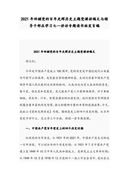
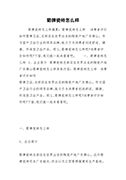
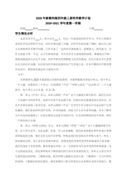
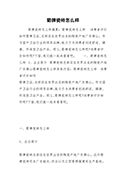
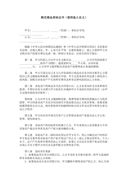
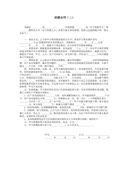
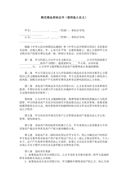












 扫一扫支付
扫一扫支付